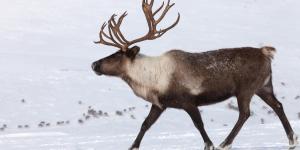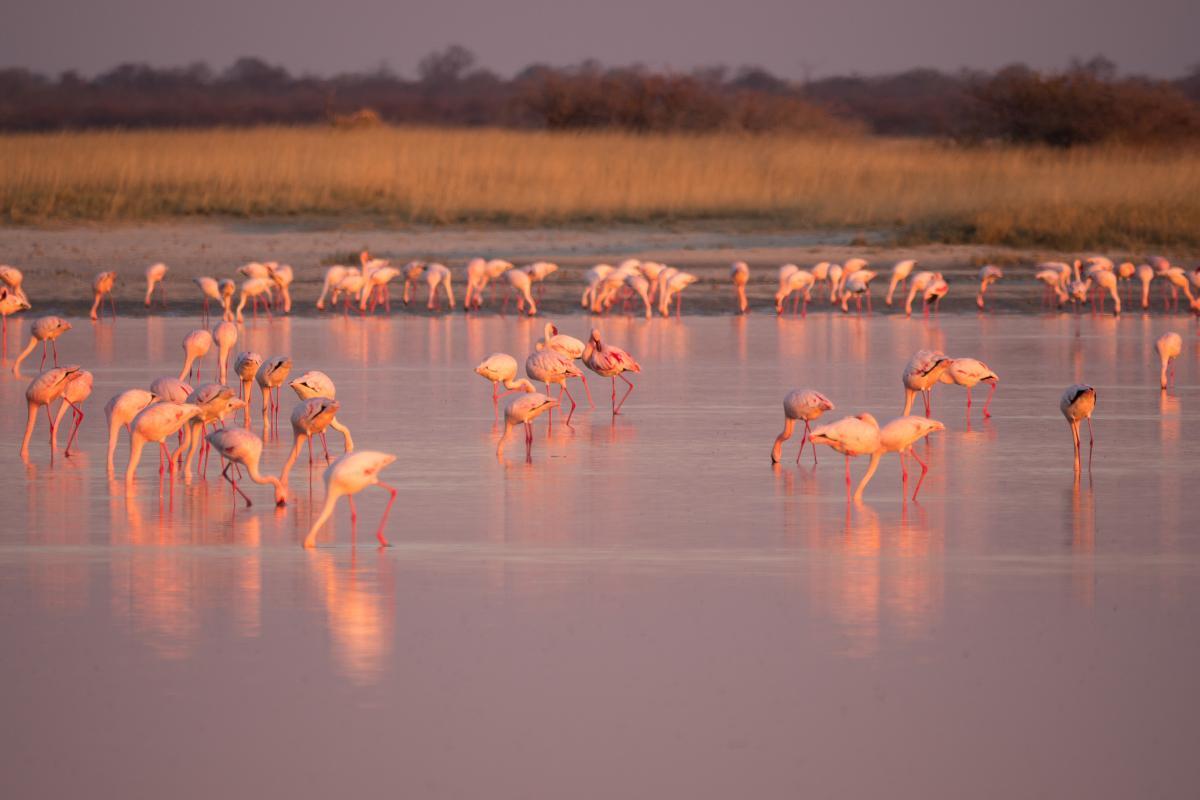Where Do Flamingos Live in the Wild?


Flamingos in the wild live on every continent except Antarctica. This does not mean they can live in any environment since the natural habitat of flamingos needs to be in temperate and warm climates. Water is also a very important factor in determining where a flamingo can live since they gain their sustenance from shallow wetlands. As wading birds, they remain in standing water for long periods, famously doing so on one leg. Their diet influences their habitat, behaviors and even their physical characteristics. However, there is some variation according to the type of flamingo species.
At AnimalWised, we ask where do flamingos live in the wild? We find out about flamingo habitat in general, as well as look at each type of flamingo species individually.
Flamingo habitat distribution
Flamingos have an almost worldwide distribution that varies depending on the species. In the wild, they are found America, Africa, Asia and Europe. There are six different species of flamingo known to us, all found in the family Phoenicopteridae. Although they have similar needs in terms of habitat and diet, not all can live in the same areas.
While they can live in various areas, flamingos will not use them all for the same purposes. For example, each species might spend some time in a region, but will not choose this habitat for reproductive purposes. Some can also wander further from their normal environment, a behavior known as vagrancy in animals. With this in mind, we share the natural distribution of flamingos in the wild:
- American flamingo (Phoenicopterus ruber): residence and breeding range is in countries such as Aruba, Bahamas, Bonaire, Colombia, Cuba, Curacao, Dominican Republic, Ecuador, Guyana, Haiti, Suriname, Trinidad and Tobago, and Venezuela. They also migrate to areas towards Mexico, Puerto Rico and Jamaica, but they are not known to reproduce in these countries. They can also be vagrant in Anguilla, Barbados, Belize, Bermuda, Cayman Islands, French Guiana, Honduras and the United States, among other regions.
- Chilean flamingo (Phoenicopterus chilensis): a resident of Argentina, Chile, Bolivia, Peru, Ecuador and Paraguay. It has a non-reproductive presence in Brazil, Ecuador and Paraguay, while vagrancy in this species has been be seen in the Falkland Islands.
- Greater flamingo (Phoenicopterus roseus): as their name suggests, they have a wide distribution which is mainly in Africa and Asia. They have a lesser presence in Europe. Some of the countries where they can reside include Angola, Armenia, Bangladesh, Cape Verde, Cambodia, Cyprus, Eritrea, Ethiopia, France, Greece, Guinea, India, Iran, Italy, Kenya, Madagascar, Morocco, Mozambique, Nepal, European Russia, Somalia, Spain, Sri Lanka, Turkey and Zimbabwe, among others. In terms of reproductive colonies, this flamingo type is distributed throughout Afghanistan, Algeria, Botswana, Egypt, Kazakhstan, Mauritania, Namibia, Senegal and South Africa. They can also be vagrant in Austria, Belgium, Cameroon, China, Congo, Denmark, Equatorial Guinea, Germany, Mongolia, Niger, Norway, Poland and the Canary Islands, among others.
- Andean flamingo (Phoenicoparrus andinus): the distribution of this species of flamingo is much more restricted, being found in Argentina, Bolivia, Chile and Peru. Vagrantly, they have been known to travel to Brazil. Learn more about the different types of migratory birds, a group to which flamingos belong.
- Lesser flamingo (Phoeniconaias minor): the lesser flamingo has a range that includes Africa and Asia. They are found in Botswana, India, Namibia, South Africa and Tanzania as residents where they carry out reproductive behavior. It is also has a non-reproductive presence in Angola, Cameroon, Congo, Eritrea, Ethiopia, Gambia, Guinea, Madagascar, Mozambique, Pakistan, Senegal, Sierra Leone, Uganda and Yemen, among others. Some of the areas where they can be vagrant include Chad, Ghana, Iran, Oman, Saudi Arabia, Sri Lanka, United Arab Emirates, Egypt, Afghanistan, Morocco and Spain.
- James's flamingo (Phoenicoparrus jamesi): this species is naturally restricted to Argentina, Chile, Bolivia, and Peru.
Discover more about flamingo habitat and behaviors with our article on fun facts about flamingos.

Flamingo habitat
Although the amount of countries and regions in which different types of flamingos may live is vast, they all need to provide certain elements in order for the bird to survive in the wild. One of the most important environmental elements is the presence of a body of water. This is because flamingos are filter feeders, filtering out their food from the water with a specialized beak.
Not all types of flamingo will have the exact same needs. For this reason, we can compare differences in habitat between flamingo species:
- American flamingo: these birds live in large groups, being very gregarious and numbering thousands of individuals in each colony. They live in extensive marshes, hypersaline estuaries, coastal areas, marine inlets, rivers, open lakes, inland, in lagoons or volcanic lakes.
- Chilean flamingo: this flamingo has a somewhat more restricted presence compared to other species. It lives in coastal marshes, estuaries, lagoons and salt lakes. The elevation of these habitats ranges from sea level to about 4,500 meters above sea level.
- Greater flamingo: the greater flamingo develops their behaviors in shallow eutrophic aquatic spaces, saline lagoons, alkaline lakes, sewage ponds, dams and coastal waters. It is only known to enter fresh waters to bathe and drinking. They are also known to visit hot springs and, occasionally, rice paddies.
- Andean flamingo: its presence is particularly restricted to alkaline lakes and salt lakes present in high mountains. This makes their range between 2,300 and 4,500 meters high, being most associated with the Andean mountains which provide their name.
- Lesser flamingo: this type of flamingo is found in large hyper-saline and alkaline lakes, coastal salt flats, muddy beaches, estuaries and marine bays.
- James's flamingo: this flamingo species lives on the high plateaus of the Andean Mountains, specifically in shallow saline and alkaline lakes. It can also be found in bodies of fresh water and is distributed between 2,300 and 4,000 meters above sea level.

Protected areas for flamingos
Despite the large variety of habitats in which flamingos can live, there are various factors which threaten to make them inhospitable for these wading birds. While no type of flamingo is yet endangered, the current conservation status of each species in the wild is as follows:
- American flamingo: Least Concern (LC)
- Chilean flamingo: Near Threatened (NT)
- Greater flamingo: Least Concern (LC)
- Andean flamingo: Vulnerable (VU)
- Lesser flamingo: Near Threatened (NT)
- James's flamingo: Near Threatened (NT)
Due to the various threats to their habitat, many countries have provided protected areas for flamingos to stay. Unfortunately, most natural habitats of flamingos are not protected. It is also possible they can reside in a protected area for some time, but then migrate to a non-protected area.
The International Union for Conservation of Nature (IUCN) reports that monitoring has been suggested in Spain for the greater flamingo. In the case of the Andean flamingo, it reproduces in the Salinas and Aguada Blanca Natural Reserve in Peru. It can also be found in the Salar de Atacama National Flamingo Reserve in Chile and in the Las Chinchillas Provincial Natural Reserve in Argentina.
For the lesser flamingo, an artificial site has been created in South Africa for them to reproduce. In Botswana, one of the salt flats where it breeds became a flamingo sanctuary since 2009, providing protection during the reproductive season. This sanctuary is the one shown in the image below.
Finally, the James's flamingo is present in the Eduardo Avaroa Fauna Natural Reserve in Bolivia. There are currently no reports of specific protection for the American flamingo.
Now you know all about where flamingos live in the wild, you may want to discover more about their specific behaviors. You can do so with our articles on do flamingos fly and why do flamingos stand on one leg?

If you want to read similar articles to Where Do Flamingos Live in the Wild?, we recommend you visit our Facts about the animal kingdom category.
- Animal Diversity Web (2023). Retrieved from: https://animaldiversity.org/
- IUCN 2023. IUCN Red List of Threatened Species. Version 2023-1.








